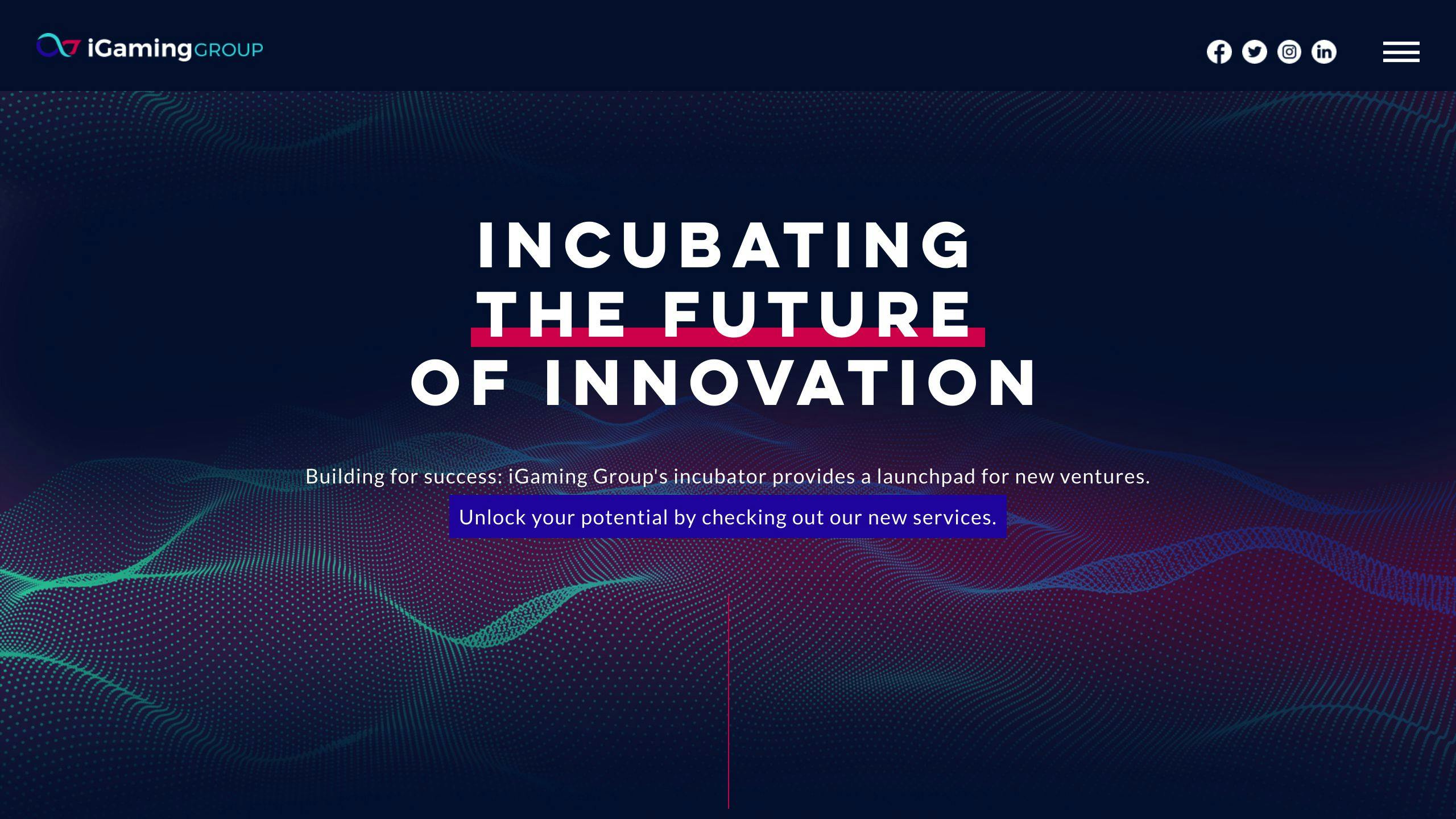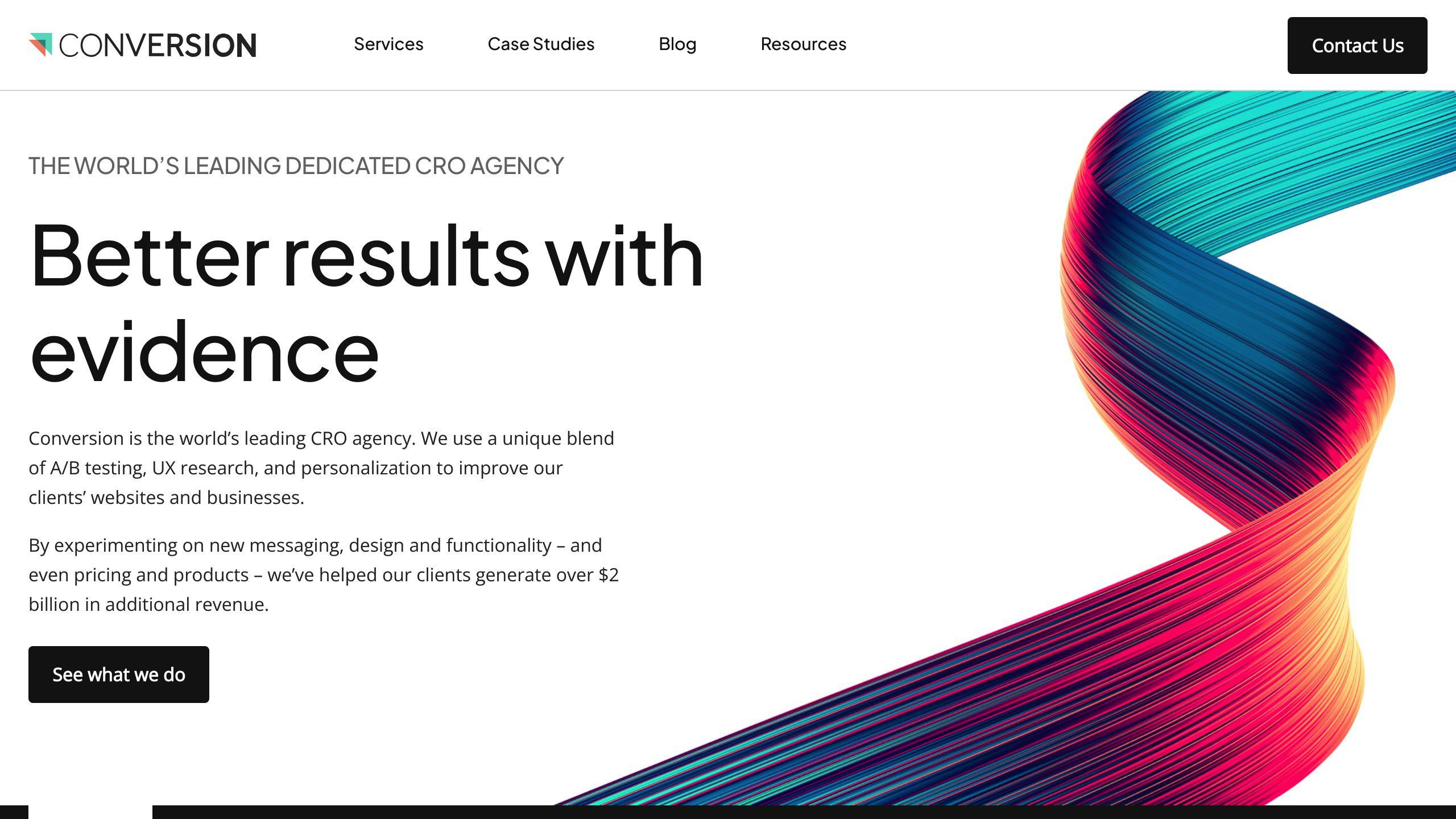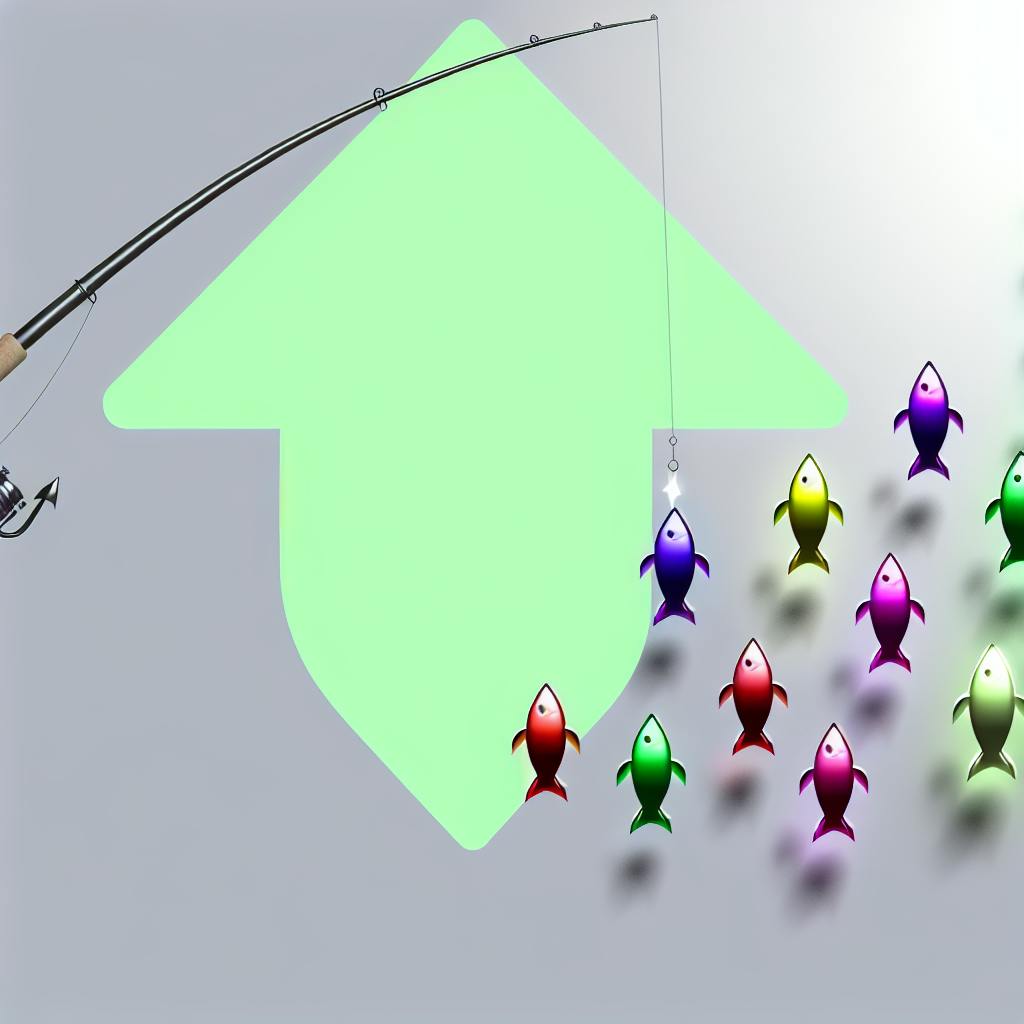Retargeting lost leads is crucial for businesses to recover potential revenue and improve customer engagement. Up to 70% of leads are lost during the sales process, highlighting the need for effective retargeting strategies.
Why Leads Disengage
Leads disengage due to various reasons, including:
- Lack of personalization
- Misaligned expectations
- Competitor influence
- Complex sales process
- Poor communication
- Lack of trust
7 Strategies to Recover Lost Leads
- Survey Lost Leads: Gather feedback to identify pain points and improve customer experience.
- Monitor Trigger Events: Track changes in job roles, company expansions, or industry updates to re-engage with relevant offers.
- Share Relevant Content: Provide informative blog posts, whitepapers, or case studies to address pain points and interests.
- Offer Incentives: Motivate leads with discounts, free trials, or exclusive content.
- Try New Communication Methods: Experiment with social media, phone calls, or email campaigns to find the most effective channels.
- Use Retargeting Ads: Display targeted ads on websites, social media, or email campaigns.
- Reassess Needs of Lost Leads: Understand current pain points and provide fresh solutions.
| Key Takeaway | Description |
|---|---|
| Monitor Lead Behavior | Track lead behavior to understand their needs and preferences. |
| Test New Tactics | Experiment with new retargeting strategies to stay ahead of the competition. |
| Optimize Ad Campaigns | Continuously refine ad campaigns to ensure maximum ROI. |
By implementing these strategies and following ethical retargeting practices, businesses can recover lost leads, increase conversions, and drive revenue growth.
Why Leads Disengage
Leads disengage from the sales process for various reasons. Understanding these reasons is crucial to developing effective retargeting strategies.
What are Lost Leads?
A lost lead is a potential customer who has shown interest in a product or service but failed to convert. These individuals have already demonstrated a level of intent, making them a valuable asset to any business. Lost leads can be categorized into two types: those who have abandoned their purchase journey and those who have opted out of further communication.
Common Causes of Lead Disengagement
Leads disengage due to various reasons. Here are some common causes:
| Reason | Description |
|---|---|
| Lack of personalization | Leads feel that communication is not tailored to their specific needs or interests. |
| Misaligned expectations | The product or service does not meet the lead’s expectations, leading to disengagement. |
| Competitor influence | Leads are swayed by competitors’ offerings, causing them to lose interest in the original product or service. |
| Complex sales process | A lengthy or complicated sales process can deter leads from continuing their purchase journey. |
| Poor communication | Leads feel that communication is unclear, irrelevant, or too frequent, leading to disengagement. |
| Lack of trust | Leads do not trust the brand or feel that their data is not secure, causing them to disengage. |
By understanding these common causes of lead disengagement, businesses can develop targeted retargeting strategies to address these issues and re-engage lost leads. In the next section, we’ll explore seven strategies to recover lost leads and maximize revenue growth.
7 Strategies to Recover Lost Leads
Recovering lost leads is crucial for businesses to maximize revenue growth and minimize the loss of potential customers. In this section, we’ll explore seven effective strategies to retarget and convert lost leads.
Survey Lost Leads
Surveying lost leads helps identify the reasons behind their departure and opportunities for improvement. This involves sending targeted emails or surveys to understand their pain points, concerns, and expectations.
| Survey Goal | Description |
|---|---|
| Identify pain points | Understand the reasons behind lead disengagement |
| Gather feedback | Collect insights to refine sales strategies |
| Improve customer experience | Create a more personalized experience for future leads |
For instance, a software company can survey lost leads to understand why they didn’t convert. The feedback may reveal that the pricing was too high or the product features didn’t meet their needs. With this information, the company can adjust its pricing strategy or develop new features to better cater to the target audience.
Monitor Trigger Events
Trigger events, such as a change in job role or company expansion, can create new opportunities to re-engage lost leads. By monitoring these events, businesses can send targeted campaigns or personalized messages to reignite interest and provide relevant solutions.
| Trigger Event | Description |
|---|---|
| Job role change | Target lost leads with new job titles or responsibilities |
| Company expansion | Offer solutions to support business growth |
| Industry updates | Provide relevant information on industry trends and developments |
For example, a marketing agency can use LinkedIn to track changes in job roles or company expansions. When a lost lead is promoted to a decision-making position, the agency can send a congratulatory message with a personalized offer or solution tailored to their new role.
Share Relevant Content
Sharing valuable and relevant content can attract lost leads back into the conversion funnel. This involves creating informative blog posts, whitepapers, or case studies that address their pain points and interests.
| Content Type | Description |
|---|---|
| Blog posts | Informative articles on industry trends and topics |
| Whitepapers | In-depth guides on solving specific pain points |
| Case studies | Real-life examples of successful implementations |
A B2B software company can create a blog post on "10 Ways to Improve Productivity" and share it with lost leads who previously showed interest in their product. The content provides value and establishes the company as an authority in the industry, increasing the chances of re-engagement.
Offer Incentives
Offering incentives, such as discounts or exclusive offers, can motivate lost leads to re-engage with a business. These incentives should be personalized and relevant to the lead’s interests and needs.
| Incentive Type | Description |
|---|---|
| Discounts | Limited-time offers or exclusive deals |
| Free trials | Temporary access to products or services |
| Exclusive content | Early access to new features or premium content |
For instance, an e-commerce company can offer a 10% discount to lost leads who abandoned their shopping carts. The offer is personalized and relevant, increasing the chances of conversion.
Try New Communication Methods
Trying new communication methods, such as social media or phone calls, can help re-engage lost leads. This involves experimenting with different channels and messages to find what works best for each lead.
| Communication Method | Description |
|---|---|
| Social media | Targeted ads or personalized messages on social platforms |
| Phone calls | Personalized calls to discuss pain points and solutions |
| Email campaigns | Targeted email sequences to re-engage lost leads |
A sales team can try calling lost leads who previously only received email campaigns. The phone call provides a more personal touch and allows for a deeper conversation, increasing the chances of re-engagement.
Use Retargeting Ads
Retargeting ads can remind lost leads of a business’s services and bring them back into the sales funnel. These ads should be targeted and personalized, highlighting the benefits and value of the product or service.
| Ad Type | Description |
|---|---|
| Display ads | Targeted ads on websites and social media platforms |
| Search ads | Ads triggered by specific search queries |
| Email ads | Targeted ads in email campaigns |
A travel company can use retargeting ads to target lost leads who previously searched for flights or accommodations. The ads can offer exclusive deals or discounts, encouraging them to book a trip.
Reassess Needs of Lost Leads
Reassessing the needs of lost leads involves understanding their current pain points and how a business’s services can meet those needs. This involves starting anew and providing a fresh perspective on how the product or service can solve their problems.
| Reassessment Goal | Description |
|---|---|
| Identify current pain points | Understand the lead’s current challenges and concerns |
| Provide a fresh perspective | Offer a new solution or approach to address their needs |
| Re-establish communication | Start a new conversation to re-engage the lead |
A consulting firm can reassess the needs of lost leads by sending a personalized email or message. The message can ask about their current challenges and how the firm’s services can help address those challenges, providing a fresh start and increasing the chances of re-engagement.
By implementing these seven strategies, businesses can effectively retarget and convert lost leads, maximizing revenue growth and minimizing the loss of potential customers.
sbb-itb-ec48e32
Ethical Retargeting Practices
Retargeting lost leads can be an effective way to maximize revenue growth and minimize the loss of potential customers. However, it’s crucial to align retargeting strategies with ethical standards and best practices to respect user privacy and avoid potential backlash.
Follow Privacy Laws
Complying with regulations such as the General Data Protection Regulation (GDPR) is essential when implementing retargeting campaigns. Ensure that you have obtained explicit consent from users to collect and process their personal data. Additionally, provide users with clear information on how their data will be used and offer them the option to opt-out of retargeting ads.
| Privacy Law | Description |
|---|---|
| GDPR | Regulates data protection and privacy in the European Union |
| CCPA | Regulates consumer privacy in California, USA |
Manage Ad Frequency and Relevance
Managing ad frequency is critical to prevent fatigue and ensure that the content remains relevant and valuable to the audience. Set frequency caps to control the number of times a user sees your ads within a given time frame. Additionally, use segmentation to tailor your ads to specific user groups and interests, increasing the likelihood of conversion.
| Ad Frequency | Description |
|---|---|
| Frequency cap | Limit the number of times a user sees an ad within a given time frame |
| Segmentation | Tailor ads to specific user groups and interests |
By following these ethical retargeting practices, businesses can ensure that their retargeting strategies are both effective and respectful of user privacy.
Retargeting Success Stories
Retargeting lost leads can be a highly effective way to maximize revenue growth and minimize the loss of potential customers. To illustrate the potential outcomes of implementing retargeting strategies, let’s examine some real-world examples of businesses that have successfully recovered lost leads.
iGaming Holding’s Conversion Boost

| Company | Result | Strategy |
|---|---|---|
| iGaming Holding | 30% increase in conversions | Targeted retargeting campaign with personalized ads |
iGaming Holding, a leading online gaming company, was struggling to convert leads into paying customers. By implementing a targeted retargeting campaign, they were able to increase conversions by 30%. The campaign focused on personalized ads that resonated with users who had previously shown interest in their services.
Convert Again’s Improved Engagement

| Company | Result | Strategy |
|---|---|---|
| Convert Again | Significant increase in customer loyalty and retention | Multi-channel retargeting approach |
Convert Again, a media agency specializing in customer acquisition, achieved improved customer interaction and loyalty via a multi-channel retargeting approach. By combining email, social media, and display ads, they were able to create a seamless user experience that encouraged lost leads to re-engage with their brand.
These success stories demonstrate the potential of retargeting lost leads to drive revenue growth and maximize customer value. By implementing targeted and personalized retargeting strategies, businesses can recover lost leads and convert them into paying customers.
Key Points on Retargeting
Retargeting lost leads is a powerful way to maximize revenue growth and minimize the loss of potential customers. By using targeted and personalized retargeting strategies, businesses can recover lost leads and convert them into loyal customers.
The Value of Retargeting
Retargeting lost leads offers a significant opportunity to recapture potential revenue and improve customer engagement. By understanding why leads disengage and developing effective retargeting strategies, businesses can increase conversions, improve customer loyalty, and drive revenue growth.
Refine Retargeting Strategies
To achieve long-term success with retargeting, it’s essential to continuously monitor and improve your approach. Here are some key takeaways:
| Key Takeaway | Description |
|---|---|
| Monitor lead behavior | Track lead behavior to understand their needs and preferences |
| Test new tactics | Experiment with new retargeting strategies to stay ahead of the competition |
| Optimize ad campaigns | Continuously refine ad campaigns to ensure maximum ROI |
By following these key takeaways, businesses can stay ahead of the competition and maintain a competitive edge in their industry.
FAQs
How to Reengage Lost Leads?
Reengaging lost leads is crucial to maximize revenue growth and minimize the loss of potential customers. Here are 8 ways to re-engage your lost leads:
| Method | Description |
|---|---|
| Evaluate ROI for Lost Leads | Track the success of your efforts by measuring the ROI for lost leads. |
| Track Dead Lead Changes | Analyze the customer journey to determine when and why leads dropped out of the sales funnel. |
| Survey Lost Leads | Understand why leads were lost in the first place by conducting surveys and polls. |
| Reconnect via Trigger Events | Identify key events or milestones that can create a sales opportunity with lost leads. |
| Retarget Lost Leads | Use retargeting ads to increase conversion rates and improve customer experience. |
| Offer Incentives and Time-bound Promotions | Motivate customers to purchase by sending them a gift, discount code, or personalized offer. |
| Create Relevant Educational Content | Provide valuable content that addresses the lead’s pain points and interests. |
| Use a Powerful CRM with Bots | Leverage a CRM with bots to track lead behavior, automate follow-ups, and personalize communication. |
By implementing these strategies, you can recover lost leads, improve customer engagement, and drive revenue growth.
Related posts
- Buy B2B Leads: Automation Integration
- Marketing Agency Lead Generation: Effective Outreach Techniques
- 7 Steps to Optimize CRM for Lead Tracking
- Lead Generation Strategies in Digital Marketing: Core Principles
